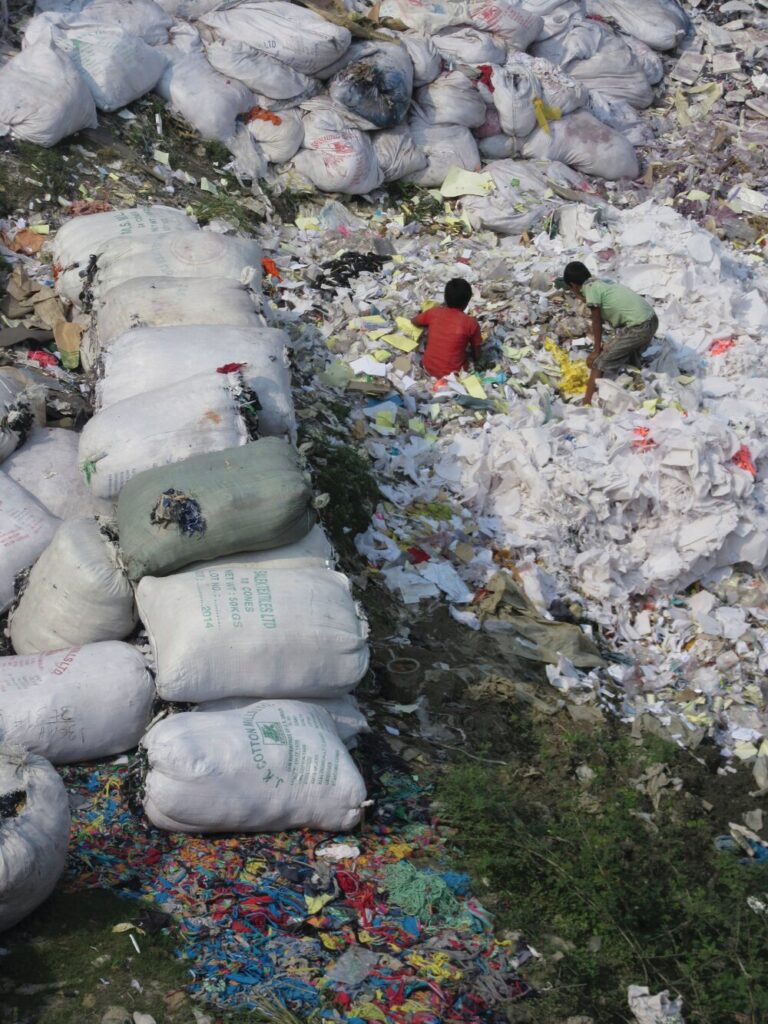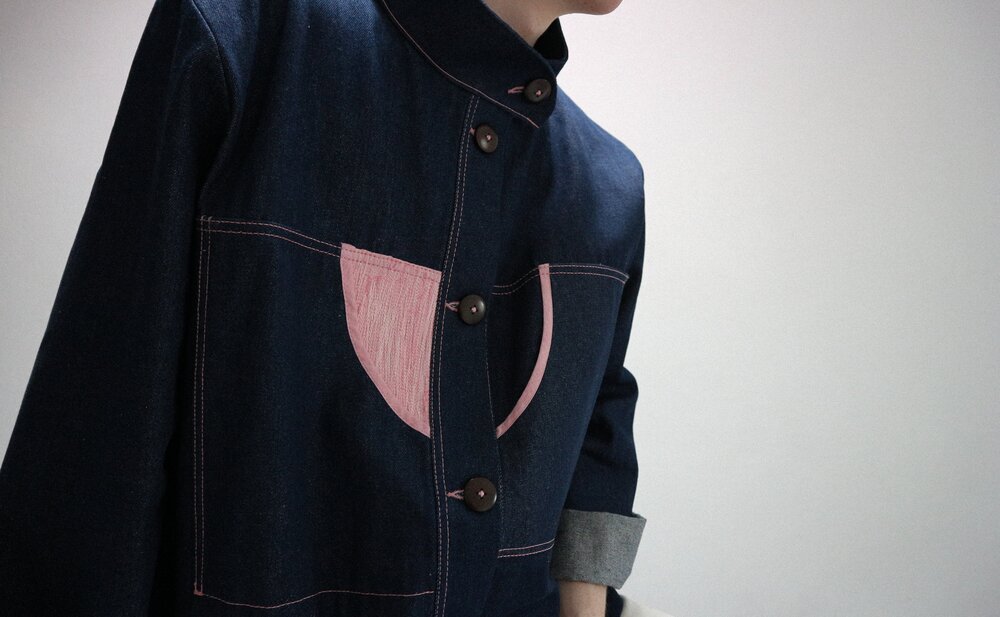The UK fashion industry contributes £26 billion to the economy and supports 797,000 jobs. Worldwide it turns over more than £2.4 trillion, and globally produces approximately 100 billion garments per year!
However, let’s spare a thought for all the off cuts of Leather, textile, clothing and other waste that is generated as a result of clothes production, combine this pile up with the throw away culture fuelled by fast fashion and you can see that we have a problem.
As it stands, fashion is the third most polluting industry to the environment after oil and coal. Due to its impact on water and its emission levels of C02 involved in production and clothes waste. This is pushing at the boundaries of the Earth’s capacity to absorb greenhouse gases, hazardous chemicals, as well as depleting resources, – not to mention drying rivers and cancer causing dyes.

According to data from Green Peace, the fashion industry is said to produce 92 million tons of solid waste each year. 150 billion tonnes of clothing end up in landfill each year, and worst still, synthetic fabrics such as nylon, polyester and acrylic, which are largely generated by fast fashion, take about 100 to 500 years to fully degrade. This excessive use of the world’s natural resources and the amount of waste produced by the industry, means resources will eventually be depleted. Needless to say, we cannot carry on in this very unsustainable manner. So there it is, the word ‘sustainable’, but what does this actually mean? Over the years, many fashion brands and designers have paid lip service to sustainability, claiming that they are becoming more sustainable in the way that they source, produce and manufacture, unfortunately, only a small percentage of brands are actually transparent when it comes to their production history. Many of them are encouraging their customer to recycle, whilst they burn their waste behind the scene or send them to landfills.
Thankfully, the alarming amount of waste, which has now been brought to our attention through the media, and charities such as Fashion Revolution, brandishing disturbing images of overflowing landfills in our face, is causing some of us to ask questions and in turn forcing the fashion industry take responsibility for its production and design methodologies to reduce waste. Big brand designers, with influence to create change are leading the way forward. Vivienne Westwood, Christopher Raeburn, and Stella McCartney who are now investing in exciting alternative materials for ready to wear collections and being very vocal on climate changes. The real cutting edge and innovative solutions to sustainability however, is emerging from this generation of fashion students who are using waste products and more sustainable materials to create exciting new collections. There is a sense that, either they begin to do something about the waste, or there might not be a planet in which it is possible to create.
These young, conscious minds are causing a surge in recycle and up cycle culture. Recent studies suggest that students all over the globe are becoming interested in using more sustainable material to create their collection, whilst 95% of Chinese students said they would love to learn about sustainability but are presently lacking resources. Fashion Designer, Christopher Raeburn understood that, “it’s an exciting time for graduates” because now is the time when “we have to change the way we’re consuming”. Christopher believes that the future of design is dependent on “collaboration and innovation, it has to be about partnership”.



Orsola de Castro, founder of Fashion Revolution, (born off the back of The Rana Plaza disaster, Bangladesh, in which 1,134 factory workers lost their lives in 2013), goes one step further, saying – ‘Education, Education, Education, is the answer. Orsola, who has spent the last twenty years of her career trying to navigate the industry problems with waste says, “A whole new world is opening up, with the role of the designer changing profoundly, as designers will need to become more creative and more intelligent in order to design with sustainable solutions in mind.
I very much believe that the next generation will relish the chance”. This was evident in the talent showcased at Graduate Fashion Week 2018, where many final year collections used materials that value the environment and strive to make a difference, using sustainability in the future of fashion. Saskia Lenaerts, from Kingston University who won the award which recognises a student’s outstanding specific contribution to a range of pertinent ethical or societal issues relating to fashion design.
“I used off-cuts of leather and old calico fabric which I re-dyed, I also used objects that I found that emphasise the process of making, such as a belt made from a measuring tap, a handbag with ruler handles and jewellery made of thimbles. I just wanted to emphasise that clothes are made by real people, just because clothes are made in a factory, somebody sat behind a sewing machine and made them.”

Manchester Metropolitan University’s, Niamh Carr, won the Lenzing Sustainable Denim Award for her denim collection made from organic cotton and candiani denim, with pre-mend in areas to increase life span (this is quite cutting edge, if you consider that, it takes an average of 7,000 litres of water to produce one pair of jeans. That’s about the amount of water you drink over the course of 5-6 years). Aurelie Fontan’s sustainable and biodegradable collection was bio-grown in a lab in Edinburgh using Kombucha (a combination of a tea, sugar and microbes, the same bacteria and yeast used to ferment the vinegary health drink kombucha). Zlata Alekhno’s collection was made from organic fabrics and pre-consumer waste, whilst Plaire Chaiphet from Kingston University integrated electronic components such as cartridge fuses, crimp connectors, broken wires, integrated circuits, and other electronic waste into her embroidery to create her final year collection. She said “I went to an electronic workshop to gather any unwanted electrical components; they were going to throw them away, and end up in landfill releasing dangerous chemicals as time passes by”.
These are exciting times for fashion and our planet, but there is still a lot to be done – Technology is not fully there yet to 100% recyclable, as only 100% natural fibre can be theoretically composted, this means metal and plastic trimmings still need to be separated from fabrics, needless to say, the waste in the landfills is not going anywhere in a hurry. And whilst the designers, manufacturers, and brands are doing their bit, we as consumers are not completely powerless to reduce waste; I think Dame Vivienne Westwood sums up our role beautifully.
“Buy less; choose well, make it last. If people bought only beautiful clothes that would be Climate Revolution.” Vivienne Westwood, GFW Lifetime Patron.











